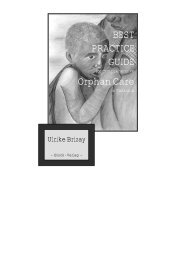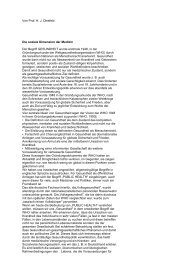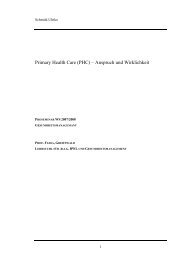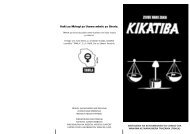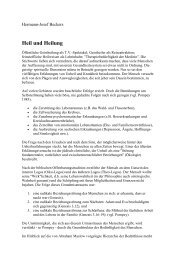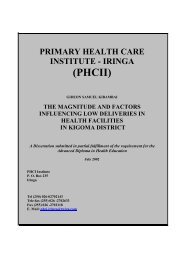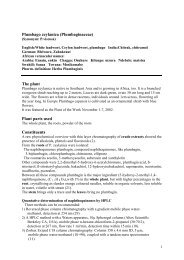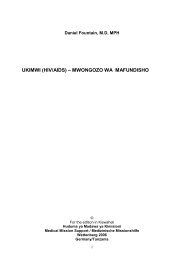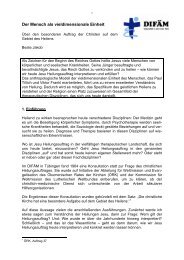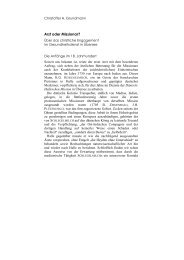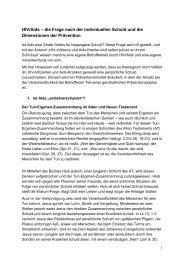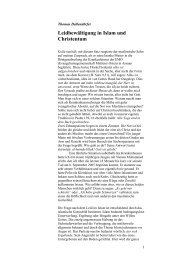Tabebuia impetiginosa, Tabebuia avellanedae ... - MMH/MMS
Tabebuia impetiginosa, Tabebuia avellanedae ... - MMH/MMS
Tabebuia impetiginosa, Tabebuia avellanedae ... - MMH/MMS
You also want an ePaper? Increase the reach of your titles
YUMPU automatically turns print PDFs into web optimized ePapers that Google loves.
Antifertility activity<br />
Adult male Wistar rats were treated with 1 mL lapachol hydroalcoholic solution<br />
(100 mg/kg body weight) for 5 days and after the treatment killed after 3 and 14 days.<br />
The gamete production was not altered, but the weight of seminal vesicles was<br />
reduced significantly. According to the authors the seminal organs are the targets of<br />
the lapachol toxicity. There is a short reference about fetal mortality in female rats,<br />
too(4).<br />
Results of clinical studies<br />
ARQ 501 (3,4-dihydro-2,2-dimethyl-2H-naphthol /1,2-b/pyran-5,6-dione) is a fully<br />
synthetic version of fl-lapachone. Combined with hydroxypropyl- beta-cyclodextrin it<br />
has successfully completed the phase I clinical trials It is currently in several phase II<br />
human clinical trials for the treatment of pancreatic cancer, head and neck cancer, and<br />
leiomyosarcoma, respectively (28).<br />
A patient suffering from occupational asthma was submitted to a clinical evaluation<br />
with measurements of lung function, skin prick tests and specific bronchial<br />
provocation by the dust (ìIpeî) from the wood of <strong>Tabebuia</strong> trees. The test was<br />
positive to Ipe.<br />
The conclusions were that the exposure to Ipe wood dust can lead to occupational<br />
asthma. The underlying mechanism could not be invented (1).<br />
Toxicology<br />
The dust of <strong>Tabebuia</strong> wood can produce asthma. The contact with it must be<br />
avoided (1)<br />
Evaluation<br />
In the 1970s Pau d`arco and lapachol were subjects of intensive debates because of<br />
their traditional reputation as anticancer medicines. The National Cancer Institute<br />
(NCI) of the USA investigated these ingredients in animal studies.<br />
They were continued in human trials with lapachol in higher concentrations.<br />
Although there was some evidence that lapachol was very active in destroying cancer<br />
cells, participants taking a therapy suffered serious side effects, like nausea, vomiting<br />
and blood problems. As a result the research into lapachol and its source, Pau d`arco<br />
was abandoned.<br />
Critics of this investigations believe that using the therapeutic doses of Pau d`arco<br />
and not the simply isolated compound lapachol, would produce similar benefits<br />
without the potentially dangerous blood effects. It is likely that lapachol interferes<br />
with the action of Vitamin K needed for the blood to clot properly. Some researchers<br />
suggest the compounds in Pau d`arco supply some Vitamin K, so that the use of the<br />
drug would not interfere with blood clotting. Others think that lapachol together with<br />
Vitamin K supplement would make it possible for patients to take lapachol high<br />
enough to permit its potential antitumour efficacy. This should be studied<br />
furthermore.<br />
Despite this many practitioners rely on the historical evidence of Pau d`arco`s action<br />
They often recommend it as a complement to conventional cancer treatment.<br />
In the case of topical application of lapachol and its related substances on the skin of<br />
mice there were neither a toxic effect nor the protein synthesis was inhibited.<br />
The topical application on the skin infected with (resistant) bacteria can be<br />
recommended, therefore.<br />
6



